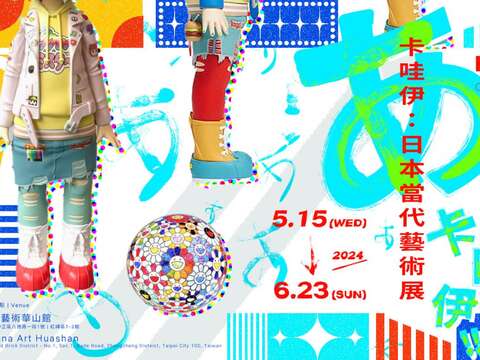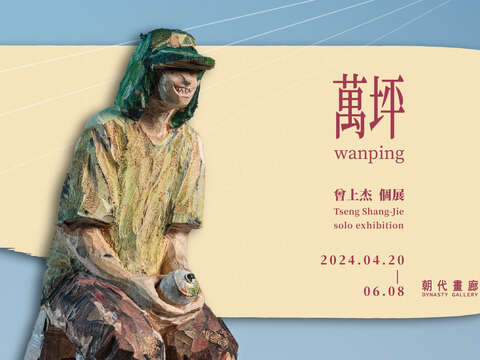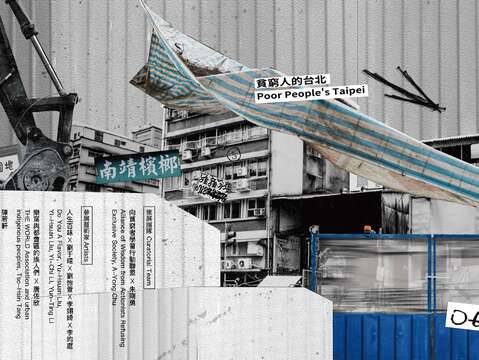Post date:2024-05-16
Updates:2024-05-16
81

- Event Time
- 2024-03-23~2024-06-30Tue.-Sun. 9:30-17:30
- Event Location
- No.181, Sec. 3, Zhongshan N. Rd.,, Zhongshan Dist., Taipei City Taiwan, R.O.C
After the end of World War II, Taiwan underwent significant transformation, which also influenced the global political landscape. The Nationalist Government’s relocation from Nanjing to Taiwan at the end of 1949 further underscored the island’s pivotal geopolitical role, introducing mainland Chinese lifestyle and culture, previously unfamiliar to Taiwan. While it caused enormous disruptions in local societies, it also filled the void left by the diminishing Japanese lifestyle and culture. Upon merging with the local way of life, these changes gave birth to a diverse and modernized new culture with profound significance and content. Nevertheless, the path toward modernity was tumultuous, noted by the assimilation or resistance to mainstream ideologies across various domains, including politics, societal conditions, religions, arts, literature, industries, and technology. In the pursuit of modernity, architecture serves as a lens through which one can comprehend the transformation of Taiwan's post-war culture and lifestyle.
The existence of architectural entities validate cultural events, making architecture a tangible cultural form that interacts with life. This exhibition explores the events and factors that influenced the development of architecture in Taiwan from 1949 to 1983. The exhibition is divided into six sub-themes: 1. Influence of the US Aid, 2. Return to Chinese Retro, 3. Emergence of Chinese Modern, 4. Defining Regional Modernity, 5. Outliers, 6. A New Life. The exhibition concurrently showcases the cultural characteristics and artistic expressions of the era that resonate with the sub-themes of architecture. The timeline concludes with the completion of the Taipei Fine Arts Museum in 1983, emphasizing the significance of a modern art museum in shaping the spiritual essence of national cultural life.
This exhibition delineates that during this period, the shaping of a new cultural landscape in Taiwan was influenced by two policies implemented by the government: 1. Stabilizing social order by accepting US aid and introducing new experiences of modern culture of life. 2. Taking an anti-communist stance and promoting traditional Chinese culture, extensively integrating Chinese retro architecture into the public works. However, in contrast to the government’s policies on living culture, there were experimental endeavors in modern Chinese architecture led by local architectural elites. Additionally, the emergence of religious buildings crafted by foreign missionaries and local artisans, coupled with the expansion of commercial venues and real estate development, not only underscore the intertwined nature of Taiwan’s architecture and diverse living cultures but also mirror the unrestricted innovations by the private sector. This dynamic serves as a catalyst for advancing Taiwan’s future-oriented living culture towards modernity.
The exhibition’s timeline reveals that within the temporal and spatial context of 1949 to 1983, Taiwan has gradually emerged from political and ideological shadows towards a modern era of liberated living. Meanwhile, it opened a door of imagination to freedom for the society before the lifting of martial law, providing the most appropriate interpretation for the mutual dialectic of architecture and freedom. In essence, it concludes: Life is free, only then can architecture be free!
The existence of architectural entities validate cultural events, making architecture a tangible cultural form that interacts with life. This exhibition explores the events and factors that influenced the development of architecture in Taiwan from 1949 to 1983. The exhibition is divided into six sub-themes: 1. Influence of the US Aid, 2. Return to Chinese Retro, 3. Emergence of Chinese Modern, 4. Defining Regional Modernity, 5. Outliers, 6. A New Life. The exhibition concurrently showcases the cultural characteristics and artistic expressions of the era that resonate with the sub-themes of architecture. The timeline concludes with the completion of the Taipei Fine Arts Museum in 1983, emphasizing the significance of a modern art museum in shaping the spiritual essence of national cultural life.
This exhibition delineates that during this period, the shaping of a new cultural landscape in Taiwan was influenced by two policies implemented by the government: 1. Stabilizing social order by accepting US aid and introducing new experiences of modern culture of life. 2. Taking an anti-communist stance and promoting traditional Chinese culture, extensively integrating Chinese retro architecture into the public works. However, in contrast to the government’s policies on living culture, there were experimental endeavors in modern Chinese architecture led by local architectural elites. Additionally, the emergence of religious buildings crafted by foreign missionaries and local artisans, coupled with the expansion of commercial venues and real estate development, not only underscore the intertwined nature of Taiwan’s architecture and diverse living cultures but also mirror the unrestricted innovations by the private sector. This dynamic serves as a catalyst for advancing Taiwan’s future-oriented living culture towards modernity.
The exhibition’s timeline reveals that within the temporal and spatial context of 1949 to 1983, Taiwan has gradually emerged from political and ideological shadows towards a modern era of liberated living. Meanwhile, it opened a door of imagination to freedom for the society before the lifting of martial law, providing the most appropriate interpretation for the mutual dialectic of architecture and freedom. In essence, it concludes: Life is free, only then can architecture be free!
 Modern Life: Taiwan Architecture 1949–1983
Modern Life: Taiwan Architecture 1949–1983








